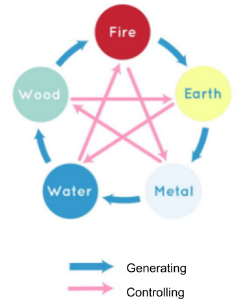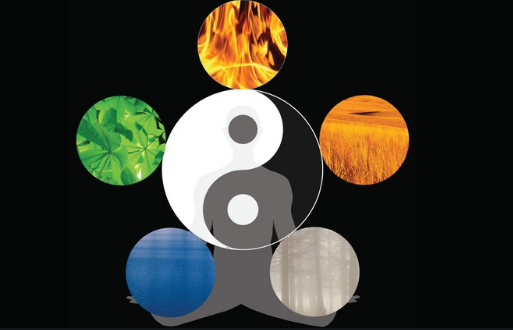Wu Xing is most commonly translated as ‘The Five Elements’. Xing has many translations, but the most fitting would be ‘element’ because of their dynamic nature.
The Aristotle elements include water, fire, air and Earth because of their qualities hot, cold, dry and wet; The concepts of Yin and Yang are being explored through their oppositions.
The popularity of the Five Elements constantly fluctuated, gaining recognition during the Warring States in science and even songs, but losing exposition from the Han Dynasty forward. It resurfaced in the Song Dynasty as a theory to diagnose and treat with Chinese medicine, but lost tract from the Ming Dynasty onward.
The Five Elements in Nature
The Five Elements started in the Zhou Dynasty, receiving the title of the ‘seats of government’ meaning a place of storage. They included water, fire, metal, wood, earth and sometimes even grain.
The theories of Yin and Yang and The Five Elements were the catalyst for turning Shamanism into medicine and understanding the patterns found in nature.
Philosophers of the Yin and Yang school were considered powerful in their political involvement because they predicted the proximate ruler and naming the emperor as an element, choosing color and season they represented from phenomena occurring at the time.
Qualities of the five elements
The qualities of these elements refer to processes, rather than its materialization:
- Water: liquidity
- Fire: heat, combustion
- Wood: solidity, flexibility
- Metal: congelation, mouldability
- Earth: nutritivity
The Xing in Wu Xing represents movement, so each element has its own direction:
- Firstly, Wood can be bent and can be straightened, moving flow freely
- Representing the blood relative to the body or the Liver-Qi
- Secondly, Fire from the flame burns up
- Representing the redness in the face
- Thirdly, Earth is associated with making and growing, the center
- Representing balance and stability
- Fourthly, Metal could be melted, reconstructed and hardened, going inward
- Representing the skin that contains the body
- Lastly, Water moistens down
- Representing the excretion within the body or the Kidney Qi
The Five Elements pertain to seasons; wood is the spring, fire is the summer, metal would be autumn and water would be winter, while the Earth pertains to none. The Earth is the center, since it encompasses all of the seasons mentioned.
Interrelationships in sequences
In the Cosmological Sequence the elements are arranged numerically in order of importance: Water, Fire, Wood, Metal, Earth

This diagram shows the generating and controlling sequence, where the elements control and generate each other in order to maintain a balance. For instance, fire controls metal, but metal controls wood which creates that fire.
The overreacting or the insulting sequence starts if there were an unnatural balance. In the overreacting sequence, they over control each other, whereas the insulting sequence reverses the controlling sequence.
The Five Element Correspondences
Within Chinese medicine, two organs pertain to an element with the balance of Yin and Yang. However, Fire contains four the Minister Fire whose purpose is to serve the Emperor Fire’s organs
- Wood: Liver(Yin) and Gallbladder (Yang)
- Emperor Fire: Heart(Yin) and Small Intestine (Yang)
- Minister Fire: Pericardium(Yin) and Triple Burner(Yang)
- Earth: Spleen(Yin) and Stomach (Yang)
- Metal: Lungs(Yin) and Large Intestine (Yang)
- Water: Kidneys(Yin) and Bladder (Yang)







Leave A Comment